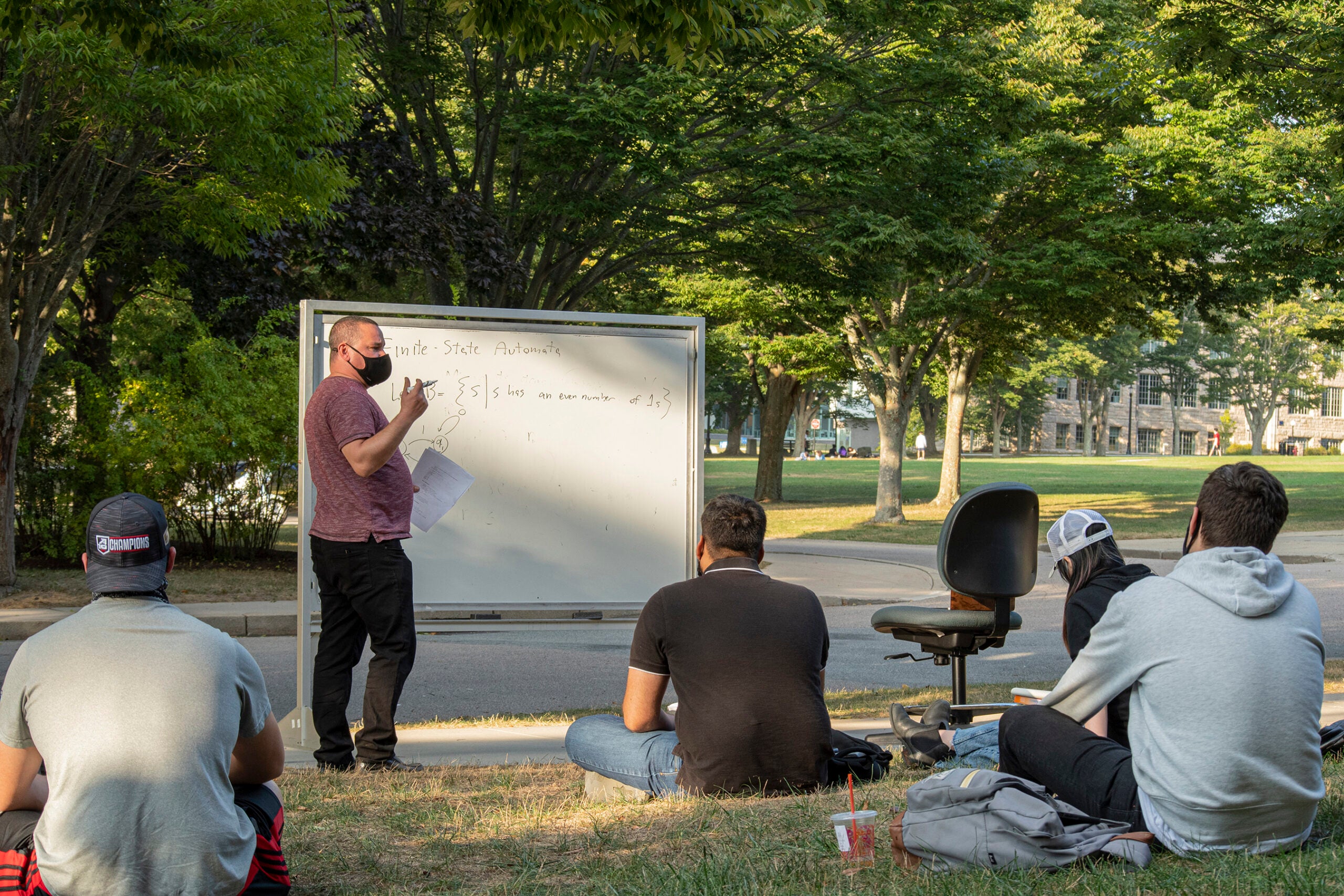KINGSTON, R.I. — February 3, 2021 — Some institutions made early and bold statements about their plans for fall 2020, decisions from which they had to backtrack. URI and some others took a different path through the uncertainties of the global pandemic to bring their communities together.
“People were calling constantly, asking us daily what we were going to do and when would we tell them. The easy thing would have been to quickly put in place a plan without doing the necessary analysis. We didn’t do that. We didn’t have the luxury of a lot of time, but we did the hard work,” Provost and Vice President for Academic Affairs Donald H. DeHayes said.
In late April and May, a scenario planning team was assembled that included staff from the Provost’s Office, students, Faculty Senate leadership, leaders from the American Association of University Professors, deans, and staff from Health Services.

DeHayes’ team was asked to deliver the plan in June. It beat the deadline by a week.
“We started with four scenarios and nine learning constructs and then we came up with a new hybrid scenario, a flexible mix of in-person, blended, and online courses that we called a flex-mix,” DeHayes said. “Our faculty provided direct input that helped build this into something that was workable. This collaborative approach was a critical feature of URI’s plan, along with ramping up faculty training to deliver the most engaging virtual experience possible.
More than 1,200 faculty participants took part in training for online teaching and learning provided by the Office for the Advancement of Teaching and Learning during the spring and summer. “It was astounding and heartening to see faculty step up to enhance their skills for online learning,” the provost said.
One of the helpful parts of developing the flex-mix plan was the creation of a risk matrix that included 15 risk factors applied to each scenario and learning construct, including critical factors, such as health, enrollment, and financial risks.
“We developed a heat map where you could see in coded colors which were the most risky scenarios to pursue,” DeHayes said. “Many of us were eating, sleeping and drinking scenario planning for six or seven weeks.”
During some of the most difficult periods of the pandemic, the University positioned itself for the future by investing in one of President Dooley’s Transformational Goals — Creating a 21st Century 24/7 Learning Environment.
“We made a $1 million investment in the latest technology and our faculty poured their hearts and souls into updating their skills so that the University could become a technology-enriched learning environment,” DeHayes said. “These investments during this challenging time served us well in the fall and will serve us well into the future.”
One of the essential steps to completing the fall semester was the decision to bolster our asymptomatic testing and test all students for COVID-19 in October and to continue surveillance testing for all community members through the end of the semester
“It gave community members confidence, and it told them we care about all of you,” DeHayes said. “And, of course, it also helped us track COVID transmission.”
There were challenges, including some students who took fully asynchronous online courses with little face-to-face interaction with professors. “But because of our adaptive management approach and our technology investments, we are going to do more synchronous teaching where a teacher can work and talk simultaneously with those in the class and those learning remotely,” he said.
Many of our faculty were simultaneously trying to deliver the best possible academic experience for their URI students while trying to ensure their own children kept up with their remote classes for their schools. Others were scrambling to look after vulnerable elders or other loved ones. Our faculty stepped up in an extraordinary way.
“I can’t count the number of Webex sessions in which I saw faculty members’ children in the background or asking a question of mom or dad,” DeHayes said. “It was nice to be able to meet our faculty’s family members and, for just a few moments, get a small preview into their lives beyond the University. With all of these issues going on in people’s lives, I never saw anyone step back from their responsibilities as a teacher, a scholar, a facilities worker, a staff member. Everyone stepped up, and I am very grateful for their efforts.”

